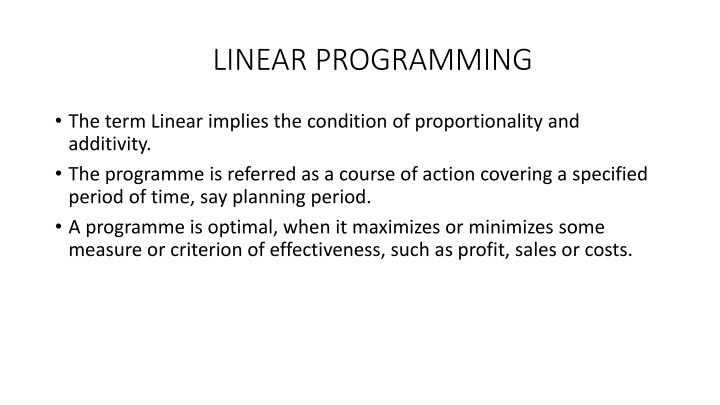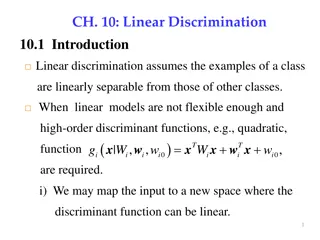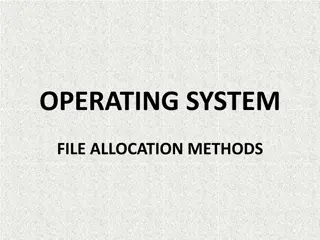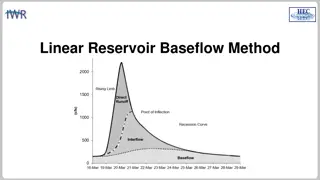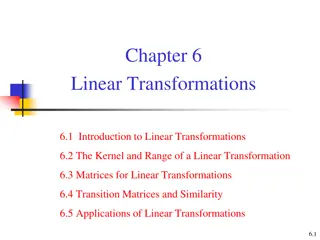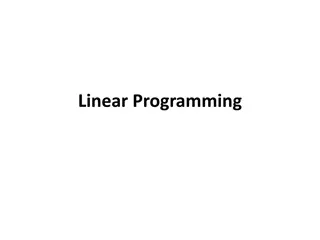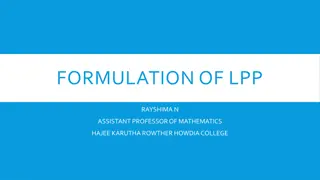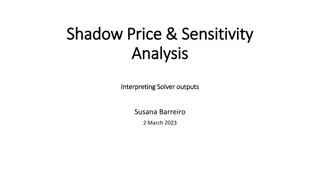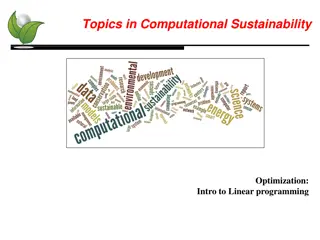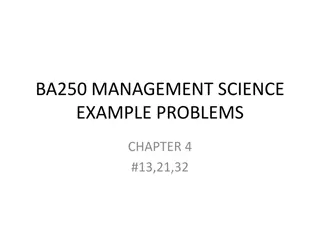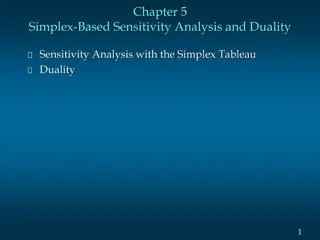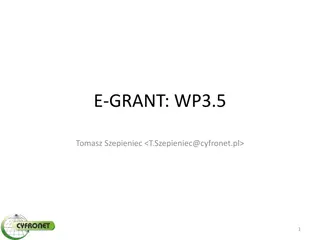Linear Programming for Optimal Resource Allocation
Linear programming is a powerful technique for optimizing resource allocation in various fields. It involves creating models with linear relationships between variables, an objective function, and structural constraints. Learn about the properties of linear programming and see a problem example involving the manufacturing of two products with limited resources.
Download Presentation

Please find below an Image/Link to download the presentation.
The content on the website is provided AS IS for your information and personal use only. It may not be sold, licensed, or shared on other websites without obtaining consent from the author.If you encounter any issues during the download, it is possible that the publisher has removed the file from their server.
You are allowed to download the files provided on this website for personal or commercial use, subject to the condition that they are used lawfully. All files are the property of their respective owners.
The content on the website is provided AS IS for your information and personal use only. It may not be sold, licensed, or shared on other websites without obtaining consent from the author.
E N D
Presentation Transcript
LINEAR PROGRAMMING The term Linear implies the condition of proportionality and additivity. The programme is referred as a course of action covering a specified period of time, say planning period. A programme is optimal, when it maximizes or minimizes some measure or criterion of effectiveness, such as profit, sales or costs.
INTRODUCTION : A Model, which is used for optimum allocation of scarce or limited resources to competing products or activities under such assumptions as certainty, linearity, fixed technology, and constant profit per units, is linear programming. Linear Programming is one of the most versatile, powerful and useful techniques for making managerial decisions. Linear Programming technique may be used for solving broad range of problems arising in business, government, industry, hospitals, libraries, etc.
When ever we want to allocate the available limited resources for various competing activities for achieving our desired objective, the technique that helps us is Linear Programming. As a decision making tool, it has a demonstrated its value in various fields such as production, finance, marketing, research and development and personnel management.
Properties of Linear Programming Any linear programming model ( problem) must have the following properties: The relationship between variables and constraints must be linear. The model must have an objective function. The model must have structural constraints. The model must have non negativity constraints.
Problem : A company manufactures two products X and Y, which require, the following resources. The resources are the capacities machine M1,M2 and M3. The available capacities are 50,25 and 15 hours respectively in the planning period. Product X requires 1 hour of machine M2 and 1 hour of machine M3. Product Y requires 2 hours of machine M1, 2 hours of machine M2 and 1 hour of machine M3. The profit contribution of product X and Y are $5 and $4 respectively.
The content of the statement of the problem can be summarized as follows: MACHINES PRODUCTS PRODUCTS AVAILABILITY IN HOURS X Y M1 0 2 50 M2 1 2 25 M3 1 1 15 Profit in US $ per unit 5 4
Graphical Method In graphical method, the inequalities ( structural constraints) are considered to be equations. This is because, one cannot draw a graph for inequality. Only two variable problems are considered, because we can draw straight lines in two dimensional plane ( X-axis and Y-axis). More over as we have non negativity constraint in the problem that is all the decision variables must have positive values always the solution to the problem lies in first quadrant of the graph.
Graphical Method (contd) Sometimes the value of variables may fall in quadrants other than the first quadrant. In such cases, the line joining the values of the variables must be extended in to the first quadrant. CHARACTERISTICS OF GRAPHICAL METHOD Generally the method is used to solve the problem, when it involves two decision variables. For three or more decision variables, the graph deals with planes and requires high imagination to identify the solution area. Always, the solution to the problem lies in first quadrant.
